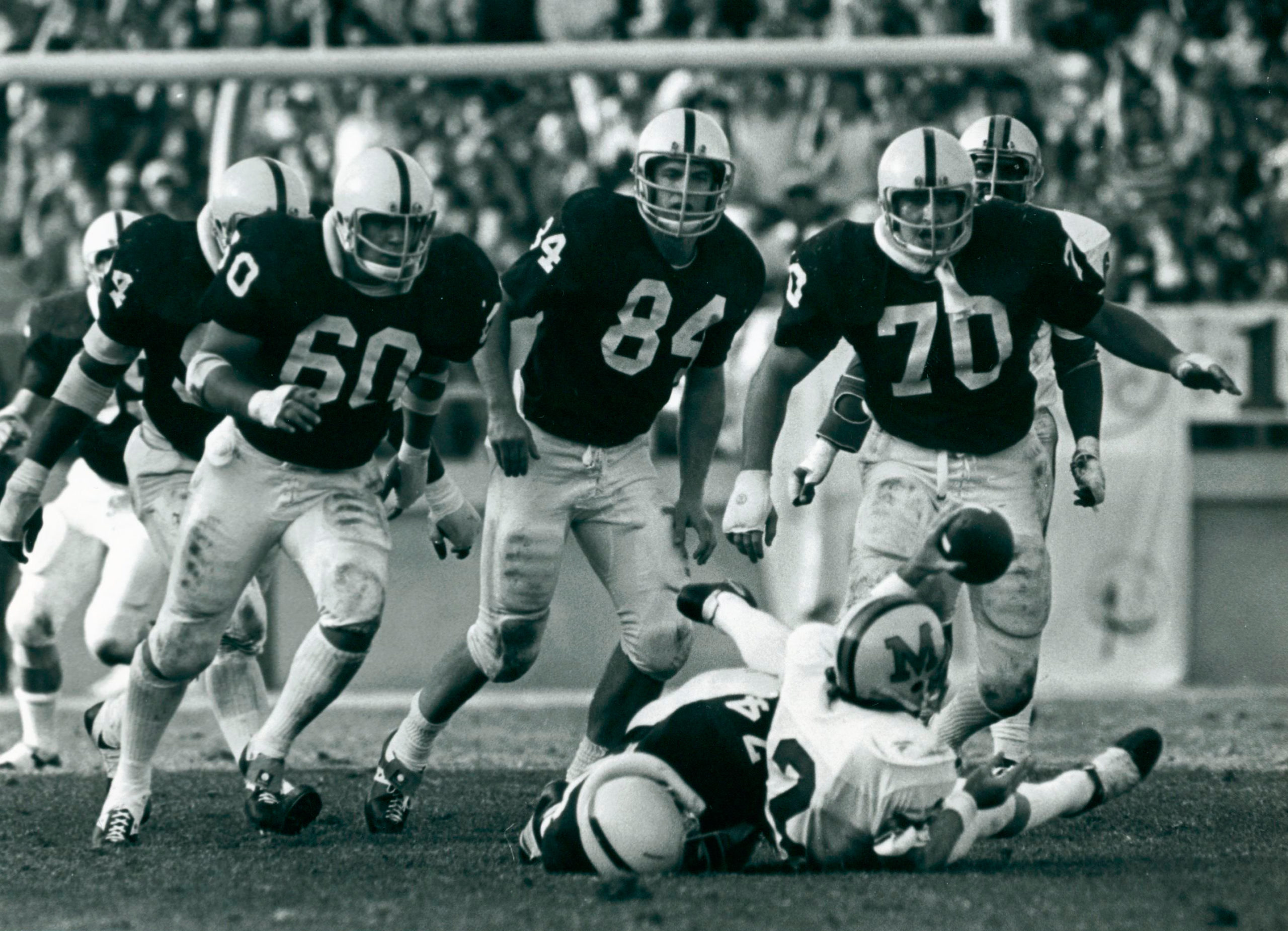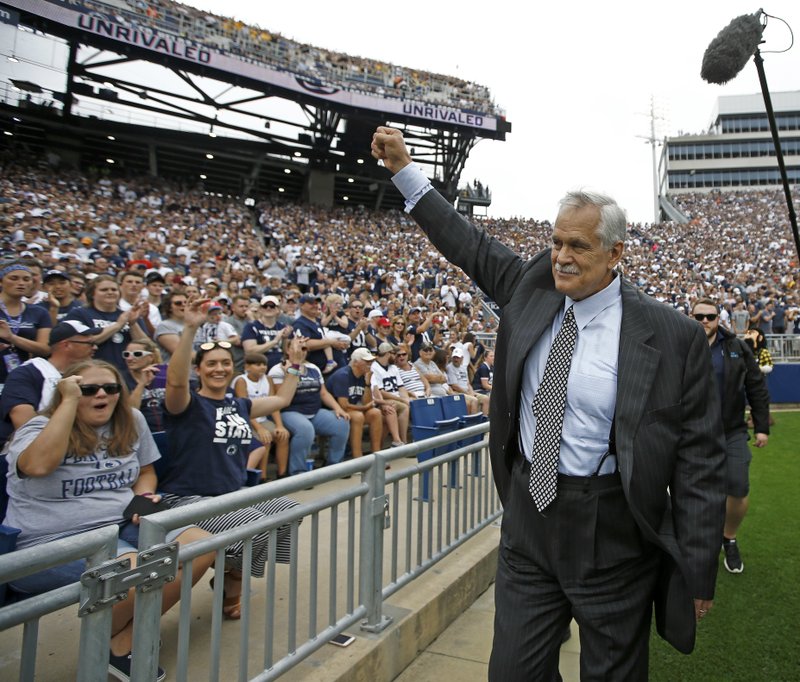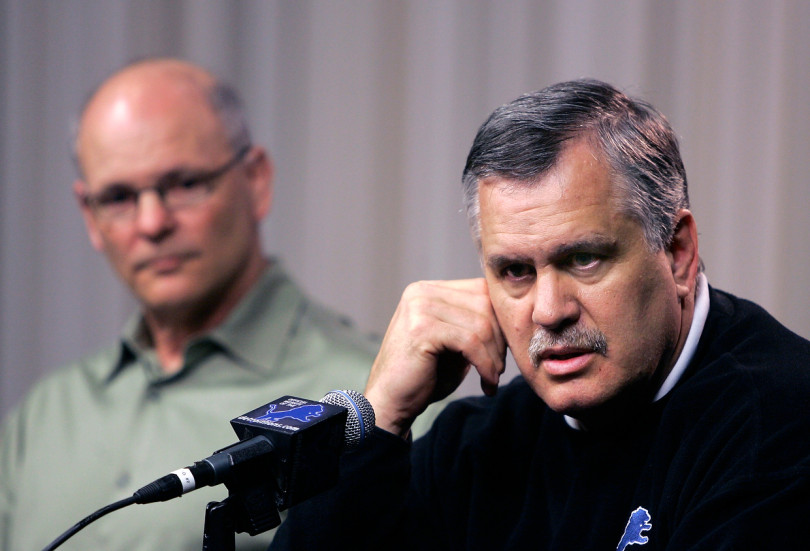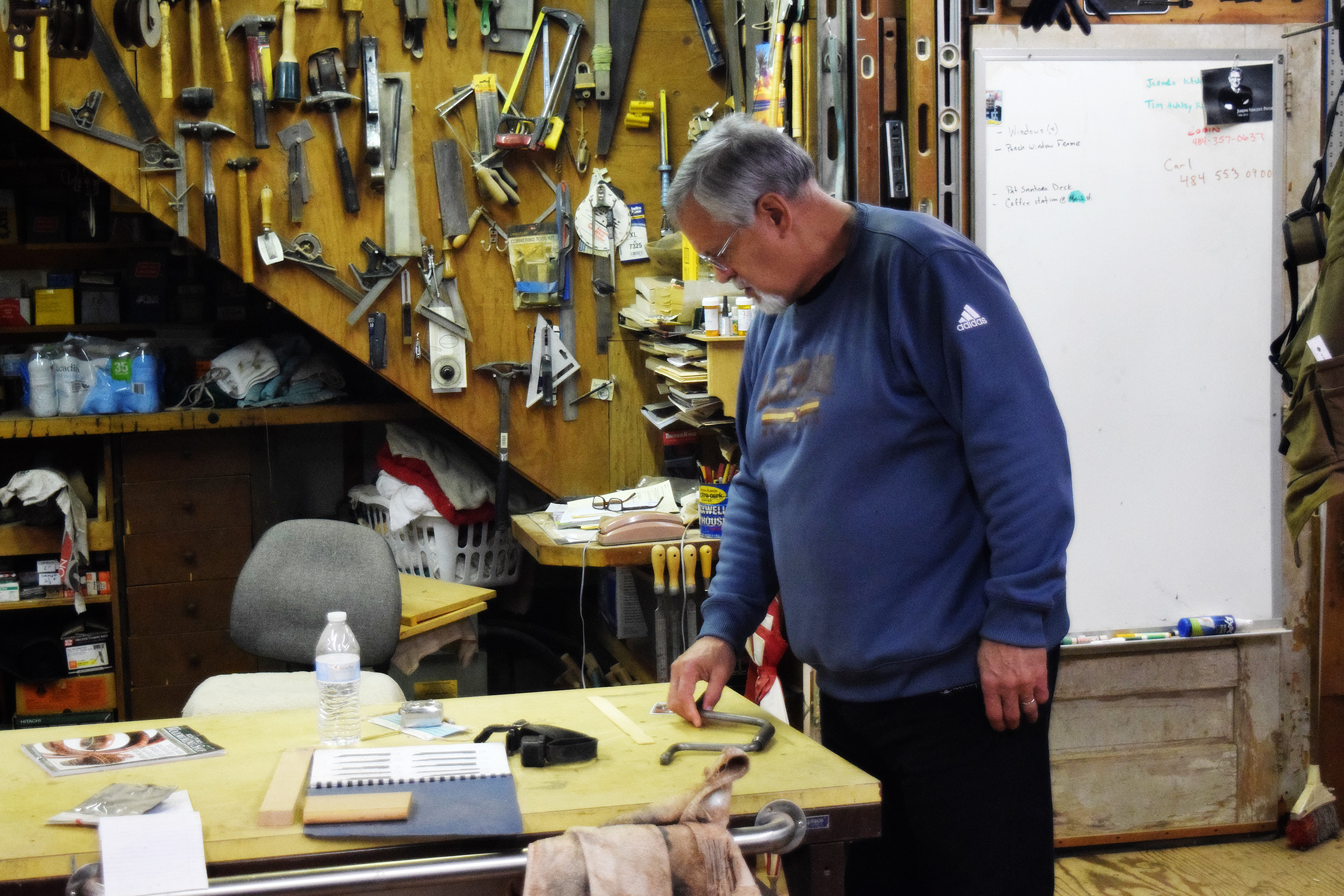Faced with an illness that could kill him the former NFL star and TV broadcaster doesn't waste time worrying.
Everything that Matt Millen faced in his life, he’s dealt with head-on in a matter-of-fact way.
He’s not sure where he gets it –– almost all his 10 siblings aren’t like that, he said –– but he does know that he’s always been that way, accepting things as they come, naturally, just as he once did with football.
Whether in the classroom, on the gridiron or in the broadcast booth, Millen has always felt comfortable in whatever situation he’s in, and he’s always found success in life.
Except, briefly, a little over a year ago –– when he was diagnosed with amyloidosis. Millen had no idea what that meant.
“Gesundheit,” Millen recalled saying to his doctor.
He would soon find out just exactly what amyloidosis would mean going forward. But the 6-foot-2, former Super Bowl champion defensive lineman, former Detroit Lions executive and now current color commentator for the Big Ten Network, didn’t flinch.
“I said, ‘Great, I have amyloidosis, what do I do?” Millen said.
Amyloidosis is a buildup of abnormal proteins that can affect the body’s organs.
Millen was informed by his doctor that there was no cure, he would need to start chemotherapy immediately and, eventually, he would need a new heart. He was also told that he could seem to be healthy one day, and then everything could change the next.
That new reality was tough on Millen’s family.
One day, he was having a conversation with one of his seven sisters, Beth.
“Do you think about dying?” she asked Matt.
“Why would I waste my time thinking about that?” Matt recalls responding.
“Well, you could easily die,” she said.
“So could you!” Millen said. “How do you know when you’re going to croak? It’s going to happen to all of us.
“I said, ‘Great, I have amyloidosis, what do I do?” Matt Millen
“Why would I waste my time thinking about it?”
That’s a common phrase you’ll hear from Millen. He doesn’t like to waste time. He’s got other things to do –– like work in his woodworking shop and spend time with his family.
Millen doesn’t think he’s figured out some big secret to life. From time to time, he forgets not everyone thinks the same way he does.
“It’s not even a philosophy, it just is what it is,” Millen said.
Getting into broadcasting

When Matt Millen was a star defensive tackle at Penn State from 1976 to 1979, his primary studies were in finance and marketing. A career in broadcasting was never on his radar.
But after his 11-year NFL career ended, that’s exactly what was put in front of Millen. He’ll always give all the credit to his longtime mentor, John Madden, the legendary Raiders head coach who later became a TV broadcaster and the namesake of the famous NFL video game.
“For whatever reason John always liked me,” Millen said.
Millen was always dialed into studying other teams and Madden took notice of that while Millen won multiple Super Bowls in the NFL.
CBS brought in Millen to do a mock broadcast of a game with longtime play-by-play announcer Dick Stockton. Before he went to the studio, CBS sent Millen material to study for the game he would be calling.
“When I got [the material], I was like ‘Who sent me this stuff? What the heck is this for?’ Millen said. “I had no idea, so I threw it out.”
When he went into the studio in New York, the producers asked Millen if he got the material to study.
“That’s what that was for!” Millen recalled saying at the time. “Then they said, ‘Well are you prepared?’ I go, it’s a football game. How can you not be prepared? It’s a game.”
“So we went in there and they put the game on and I just started talking about football. Then I thought, ‘Well this is easy. I’ll just start making stuff up, nobody will know.’ So I did.”
Millen and his wife, Patricia, watched the tape at their home afterward and she candidly told him, “Eh, maybe you better play another year.”
But CBS called him back two weeks later and offered him a job.
“They must really have some bad [broadcasters]” Millen recalled joking with Patricia.
Since he started with CBS in 1992, Millen has worked for almost all the major networks, has called NFL games, Super Bowls, major college bowl games and appeared as an analyst in studio.
More recently, he’s been working for the Big Ten Network as the network’s lead football color commentator. Even though Millen still prefers the NFL game because of the time he spent in professional football, he’s amazed every week by how passionate the college fanbases are. He puts no less preparation into a college game than an NFL game and it’s evident.

“What is different [about Matt] is his experience and his preparation,” Kevin Kugler, Millen’s play-by-play partner for BTN, said. “Matt soaks up film. He watches hours of it prior to the game, and as he did during his playing days, applies it to what we see on gameday. It’s remarkable to watch, and I’ve learned a lot by watching him.”
Now, in his second stint in broadcasting, Millen is more than happy with what he is doing. But that’s not how it was the first time around.
After several years in the booth, Millen decided broadcasting wasn’t fulfilling.
“You do all this preparation and all this work and all you do is talk about it,” Millen said. “I needed more.”
Becoming the Lions GM
Millen, working for FOX at the time, was approached by Detroit Lions owner William Ford Sr. about taking over the team’s football operations department in 1999, but they never reached an agreement.
Two years later, Millen agreed to be the president and CEO of the Lions. He had no prior experience, but that didn’t matter in the eyes of Henry Ford’s last surviving grandchild.
“Mr. Ford, I’m not qualified for this. I’ve never done this,” Millen recalls saying at the time. “He said, ‘You’re smart, you’ll figure it out.’ And I said, ‘All right.’”
Ford acknowledged at the time that he was simply trying to go a different route in hopes of getting the Lions over the top after failing to do anything with six playoff appearances in the ‘90s.
Longtime Lions beat writer Mike O’Hara said it wasn’t like Ford was “underselling” Millen’s hiring.
“He was being clear-cut about it. When they were doing the press conference, somebody asked him about [Millen] having limited experience. [Ford] said, ‘No that would be wrong. He doesn’t have limited experience –– he has no experience,’” recalled O’Hara.
Just about everyone –– both inside and outside the Lions organization –– knew the risk and was prepared for what was to come next. The only question that mattered, though: Was Millen aware of what he was getting himself into?
“No, but I thought I did,” Millen said.

The biggest challenge for Millen may have been in his title –– president and CEO. He wasn’t just the de facto general manager. He was also handling the business side of the organization and was tasked with the financial issues as well as player evaluation.
“We should have just hired a president, and then I would have been out of that crap,” Millen said. “Then I could have just stuck with the football stuff. I know that now.”
“What I figured out was, there’s so many moving parts. You need to rely on people. You can’t do everything yourself,” he said.
What Millen quickly learned is that he didn’t have enough contacts in the league and struggled to put together a staff that he knew, trusted and could work effectively.
“The biggest challenge from his job –– not talking about the roster and the players –– was building his management team,” O’Hara said. “Running a front office, not only do you have to make decisions in your job, you have to make decisions on the people you hire doing their jobs.”
It started with hiring a head coach.
“I was terrible at picking a head coach, mostly because of how I view things,” Millen said. “That guy has to be the face of your organization. The Xs and Os stuff is overrated. Anybody can do that. It’s how do you get [the team] to perform at a high level and consistently.”
“His biggest flaw was that he listened to too many people's opinions and didn't go with his own gut feeling,” Longtime Lions beat writer Mike O’Hara
Millen’s first head coach — Marty Mornhinweg — won just five games and lasted two seasons. Next up was former San Francisco 49ers head coach Steve Mariucci, but he managed to last only three seasons while winning a total of 16 games.
While picking a successful head coach takes a certain amount of luck, drafting players takes even more.
“Getting personnel,” Millen said, “that’s just a crapshoot because you just don’t know.”
The Lions had plenty of chances to improve the roster with a number of high draft picks early in Millen’s tenure, but three selections –– Charles Rogers, Joey Harrington and Mike Williams –– stick out as key failures of his tenure.
All were college stars, but Rogers, a wide receiver from Michigan State, lasted just three years and was out of the league. Harrington, a quarterback from Oregon, never found his footing and never made it past his rookie contract with the Lions. Williams, a wide receiver from the University of Southern California, found success, but it was years later in Seattle, long after his time in Detroit ended.
Not all the blame goes on Millen.
When the Lions took Williams, Millen was in favor of drafting DeMarcus Ware out of Troy University. Ware would go on to be an All-Pro with the Dallas Cowboys. But Millen’s staff persuaded him at the last minute to select Williams.
“His biggest flaw was that he listened to too many people’s opinions and didn’t go with his own gut feeling,” O’Hara said. “I think he got talked out of things and talked into things too much by people he worked with.”
Williams, Harrington and Rogers flopped, and none of the coaches Millen brought in could put it together. As losses began to pile up, so did the time spent in the office away from his family.
“I lived at the facility,” Millen said. “I had a house [in Detroit], but I was hardly ever there. It’s not a good life. The winning could have taken the sting out of it. But at what cost?”
Things ultimately came to an end for Millen in the 2008 season. During his tenure, Detroit went 31-81, for a winning percentage of .277, which ranks in the bottom five in NFL history over a seven-year period.
Millen didn’t see the end of that infamous 0-16 Lions season –– he was fired after three games –– but his name always comes up in conversations about the worst GMs in NFL history.
Still, those who were around the organization during Millen’s tenure know the team’s lack of success wasn’t all on him.
“It’s not like Matt inherited a team that had five Super Bowl trophies in its case,” O’Hara said. “It’s not like he’s the only one who didn’t win. He just happened to fail more spectacularly than some other people.”
Even though it was the biggest failure of his professional career, Millen put it all behind him the day he walked out of the Lions’ facility. He only thinks about it now when someone else brings it up.
“I just didn’t get it done. There’s nothing you can do about it,” Millen said. “It’s like, I tried my best on this calc test and I got a lesser grade than I wanted.”
Getting a grim diagnosis
Millen could never escape the game. He came back to do color commentary on Thursday Night Football and Saturday for college football on ESPN. By 2017, he was working for the Big Ten Network.
It was also that year that the Millens noticed something was up with Matt’s health.
At Christmas, he went to a concert with Patricia, their four children and their families, and Matt was having a hard time — he couldn’t walk more than 50 feet without needing to stop and catch his breath. That convinced Matt to see a doctor. A few visits to specialists later, and the diagnosis was in –– and it was something Patricia never expected.
“When he was sick, I was doing all this research and I came across amyloidosis and it said it was a very rare disease,” Patricia said. “I just brushed it off and said, ‘Well it can’t be that.’”
That’s exactly what it was.
“I always thought everything would work out.” Matt Millen
Soon came chemotherapy treatments and next came the waiting –– waiting for a new heart. A heart transplant was Millen’s best chance to offset the symptoms, even though there is no cure.
Patricia said at the time there were changes to the transplant protocols. Millen couldn’t be on a list for a mechanical heart. He needed a real heart.
“We were unsure how that was going to go,” she said. “You’re hopeful, but you’re also just waiting. You just take one day at a time.”
Matt’s outlook on life never wavered.
“Anytime you have an attitude, it could be contagious,” Patricia said. “His attitude was very positive, matter of fact. All of us took on that same type of [mentality].”
After exactly 100 days of waiting, the phone call came. There was a new heart waiting.
Plenty of appointments and prep work followed, and his transplant was officially scheduled for Christmas Eve 2018 at Beth Israel Medical Center in Newark, New Jersey.
It was a Christmas unlike any other for the Millens. With their kids spending the holidays with in-laws, it was a period Patricia said she will never forget.
“It was an amazing Christmas because I got to focus on what Christmas is all about,” Patricia said. “Not only did we get the gift of our savior, we also got the gift of Matt’s heart.”
There were no nerves for Millen heading into the operating room.
“All right, so they’re going to take your heart and put another one in,” he said. “What’re you gonna do? Just lay there.”
The surgery, which typically lasts over 12 hours, finished around 6:30 a.m., and about 12 hours later, Millen was up walking around. He said the doctors told him he had a high pain tolerance. That’s a big reason why Millen almost looks back fondly on his time in the hospital.
“When I think back on it, I actually had fun there,” Matt said. “I knew everybody on the floor in the intensive care unit. I’d go around from patient to patient. I’d mess with the doctors all the time.
“I always thought everything would work out.”
Things did turn out well for Millen, and even though he doesn’t like to talk about the heart transplant as some grave moment in his life, the gravity of the situation hasn’t been lost on him.
“I never really thought about how big of a deal this is,” Millen said. “This is not an easy thing. To me, it’s just like trimming your freakin’ toenails.
“But I did change [my] heart, so it is a big deal.”
Just a few months after his surgery, Millen was back in the broadcast booth at his alma mater in Beaver Stadium, doing play-by-play for the spring Blue-White game.
During a timeout, Millen was recognized over the loudspeakers and given a standing ovation by the crowd. As he waved from the open window of the broadcast booth into the warm April air, he paused, removed his glasses and stopped a few tears from running down his face.
It had been 110 days since his heart transplant and even though he was making excellent progress, recovering through physical therapy, it was football that was essential to his personal recovery process.
“He needed something,” Patricia said. [Broadcasting] was part of his therapy to get better.”
Enjoying life at home

The long, narrow driveway leads past the Revolutionary Era home and to a modern, three-car garage.
There’s a stairwell that leads to a large, open room below the garage filled with lumber and power tools. It’s Millen’s workshop –– the place where he spends countless hours working on furniture. Not for profit, just for fun. Some of it goes into his own home, some of it is for his kids, some of it is for the friends of his kids.
“They’re all about that age where they’re getting their first homes, so I do a ton of kitchens,” Millen explained. “I can make whatever you want.”
On the back of the door, is a whiteboard. Millen uses it to keep track of what projects are up next for him. But hanging in the top right corner of the whiteboard is a picture of his old Penn State coach –– Joe Paterno.In the other corner, in an equally inconspicuous spot, is a 1982 Topps football card of Millen, his third year in the NFL. The card is the only way you’d know you were in the presence of a two-time All-Pro –– because inside the home, there’s no memorabilia in sight. No helmets, no framed jerseys, no Super Bowl rings.
Millen in the basement of his home. At left, a photo of his former college coach ,Joe Paterno. On the right the 1982 Topps card from his third season in the NFL. ~ Photo by Tyler King
“I like to keep it in period,” Millen says of his home, which was built in 1775.
As Millen steps out of his shop, he surveys his backyard and turns to look at the rolling hills in the landscape – all of which he owns.
“I bought everything to the top of the mountain,” Millen says.
It’s simple, just the way Millen likes it. There’s no one else in sight. “Give me this, out in the woods, off the road,” Millen said. “To find my house, you have to know exactly where you’re going or you’re lost.”He’s done and seen just about everything in the football world. He’s been face-to-face with death. It’s why he said he doesn’t think too far ahead. He never has.
And if you’re looking for him, you know exactly where to find him.
“I’ll be in the shop building something,” he said.
~ 02.13.2020